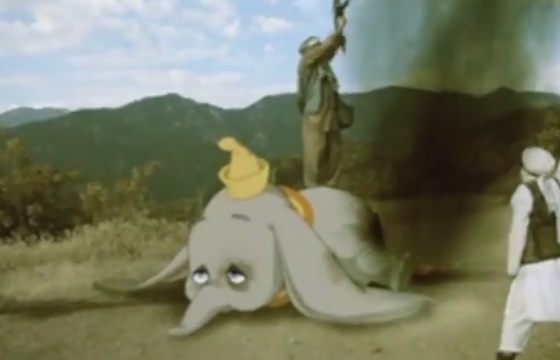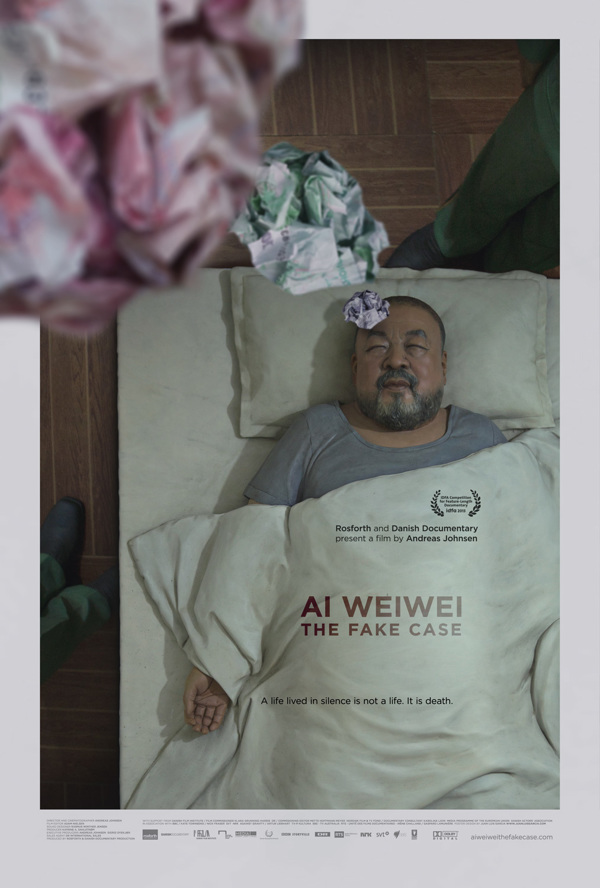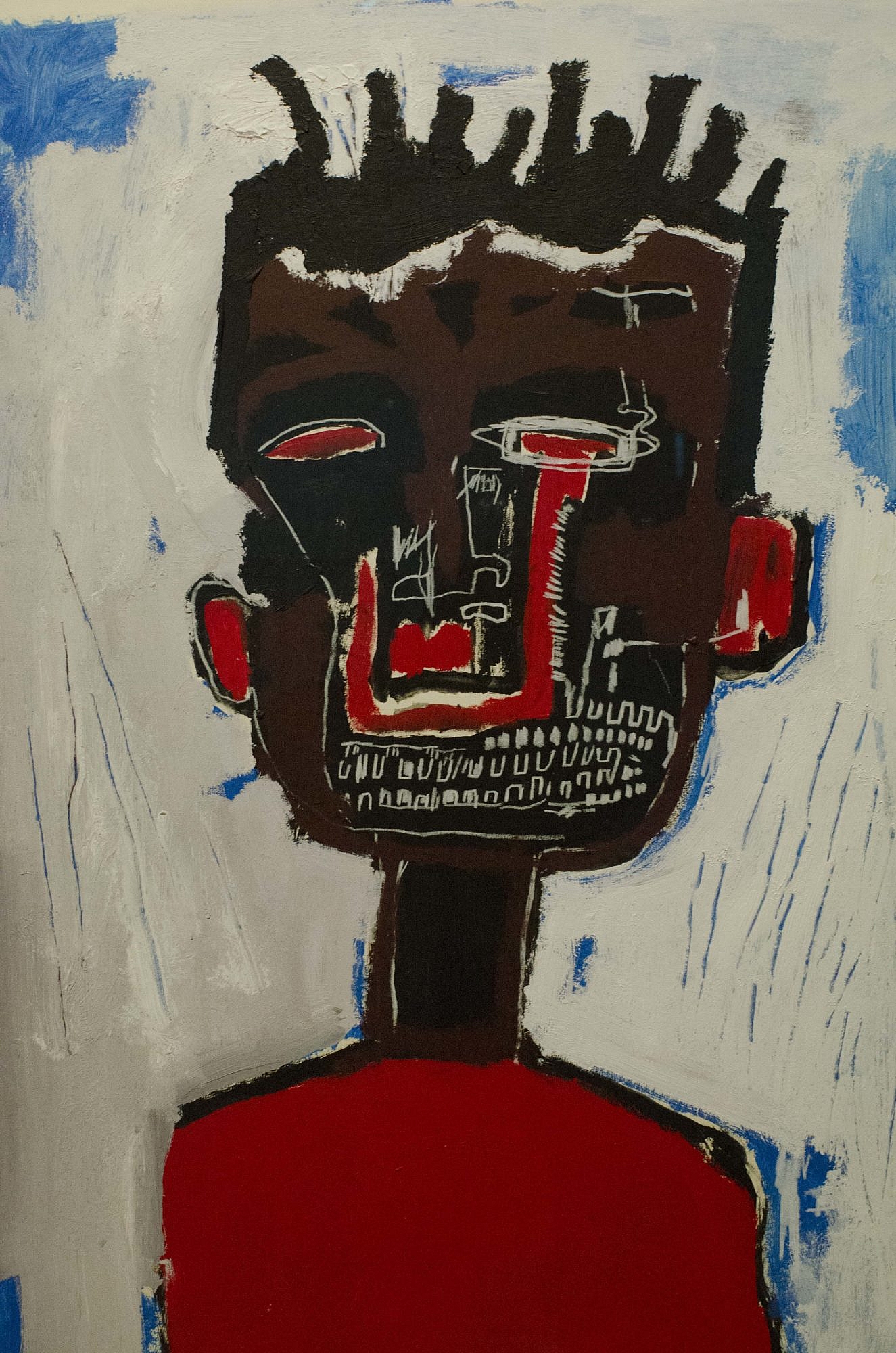
“Made In Japan” is a retrospective of the late Jean-Michel Basquiat. It’s the first comprehensive exhibition of the artist ever in Japan. At Roppongi’s Mori Art Center Gallery, 130 paintings, drawings, notebooks, video installations, and objects span Basquiat’s whirlwind of a short-lived career. In the early 80’s, his career blew up. He became history’s first internationally renowned “black” artist. Though Basquiat was made in America, Brooklyn, New York, to be exact, the show’s title is emblematic of Japan’s failing efforts to diversify its inward-only perspective. At the show’s press viewing, I was the only black person in the room. The gallery was crowded and somewhat frantic. I was getting the usual side-eyed looks, the same jolt of fear that I see Japanese people experience when near me: on the subway, in a line, at a café, park, or grocery store. Their bodies contract, freeze, or retreat.
At the entrance of the exhibit, a monochrome photo of Basquiat grins at you. Something is brooding behind his bashful glare. From across the small room he appears larger. Mysticism surrounds him. He’s an anomaly. With locked thoughts and folded arms, Basquiat looms above. He watches museumgoers watch him through his collected works. The first painting, “Untitled (Pestus)” (1982) has a black housing project building characterized as modern slave quarters. Words like “PESTUS,” “ASPHALT,” and “CARRIBEAN SUGAR CROPS” transcribe the living conditions. “SULPHATES,” like lead, poison the captives. The sidewalk is a ladder leading to a three-pointed crown. Trinity. I watch a young Japanese woman take a selfie with it. On some level, the scene reminded me of that viral video of a white girl dancing in front of Marcy Projects. On an opposing wall, Masque (1981) is elevated. It’s the head of an African king, with a rounded mouth, behind bars. Squared up to him, a red and yellow overseer stands close, similar to scenes from Ai Weiwei’s S.C.A.R.E.D. At the press viewing, there was a heart of darkness about this show.
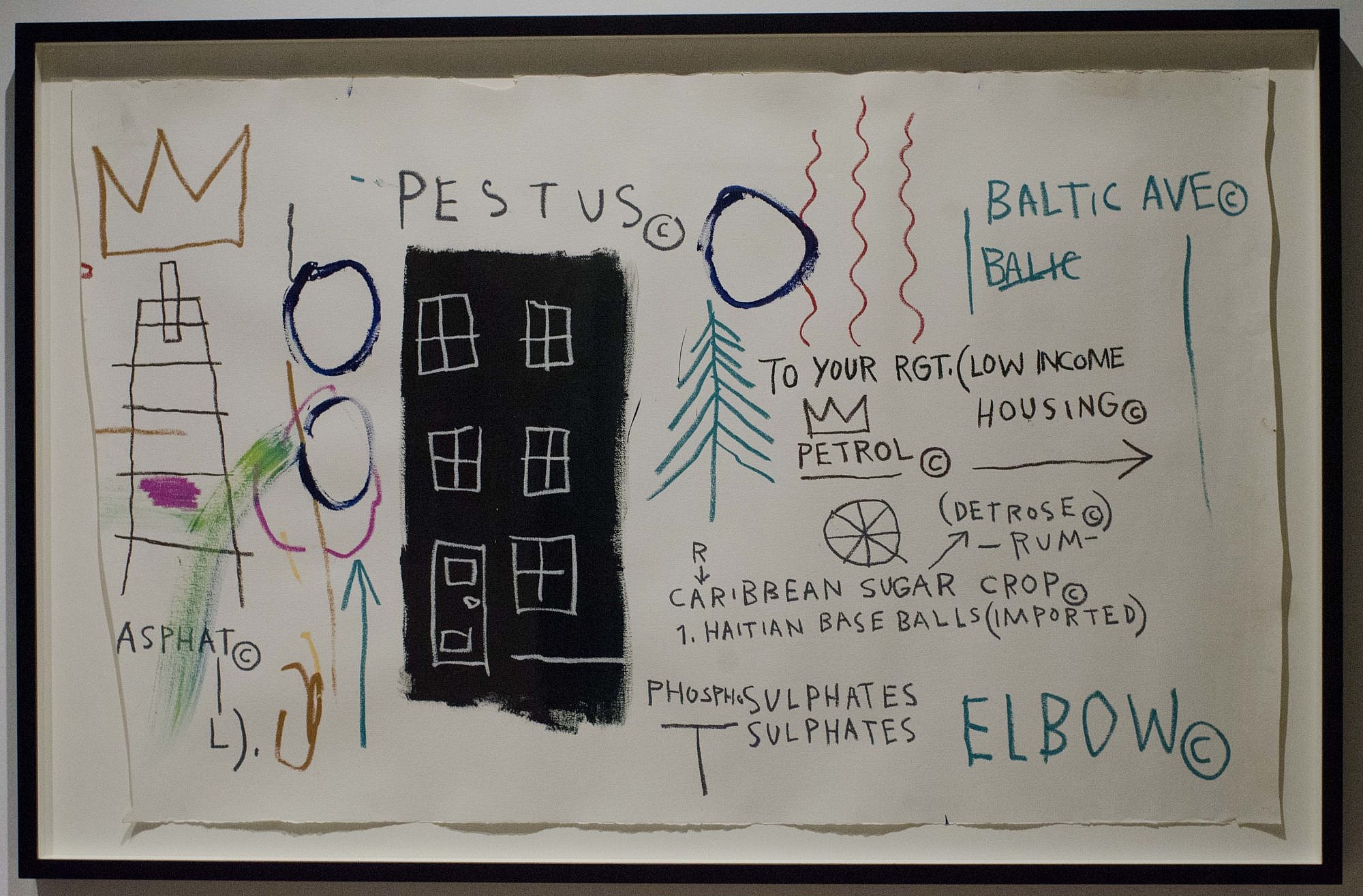
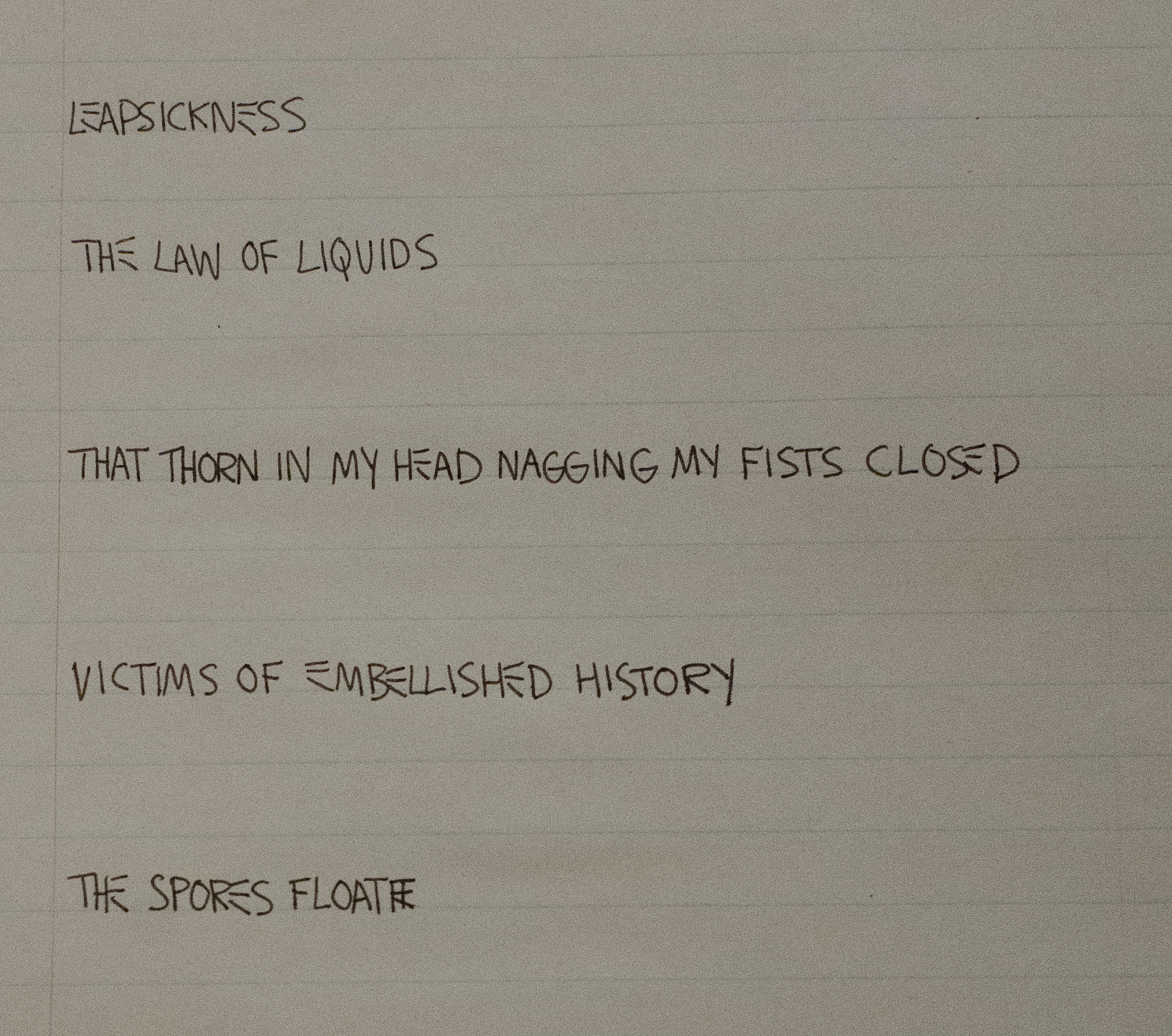
A line from Basquiat’s notebooks expressed how it felt to walk into the second part of the exhibit: “THAT THORN IN MY HEAD NAGGING MY FIST CLOSED.” Filled with his paintings, the second room expanded into a kinetic realm of invaded cannibals. The three-eyed Cantasso (1982) is pacifying his body while outlining and high-fiving the unseen. His x-rayed mouth takes the red pill. It’s a precursor to familiar paintings that are almost pornographic. In Untitled (Pecho/Oreja) (1982-83) a black skeletal head has the presence of a cat-o-nine tail cracking the air. Untitled (1982), the supposed grand prize of its brethren, is another black skull. It’s aura is a catacomb of death and money. The painting was auctioned off at a record $110.5 million dollars, furthering the great white co-sign of a “street artist.” Black death: a moral sacrifice to the advancement of white saviors wanting to assuage their guilt. As Japanese writer and the show’s editorial advisor, Kikuro Miyashita admitted in his essay in “Made’s” catalog, Basquiat, like hip-hop, was thought to be a “fad.” According to Kikuro, Basquiat’s “market value” made him relevant. It wasn’t the fact that Basquiat’s paintings appealed to rich white liberals who had a romanticized view of poverty and racism. When I talked to the show’s curator, Vienna art scholar and historian Dieter Buchhart, he said, “All of Basquiat’s work came into white collectors’ homes so he was very effective in that sense and he still is. In the Black Lives Matter movement, he’s a big hero for some people.” The question of whether Basquiat made art for a white audience is debatable. But at the viewing, it was as if Basquiat’s closed fists were swinging at the animated thorns attracted to his magnetic paintings. The sounds of his acrylic and oil stick beams wailed. Their disturbed and incensed visions were strung up like the heads of hunted game. Their skin wasn’t quite translucent but beaten, torn, shredded, devoured. They are exotic treasures, exported and toured as a spectacle like Saartjie Baartman.
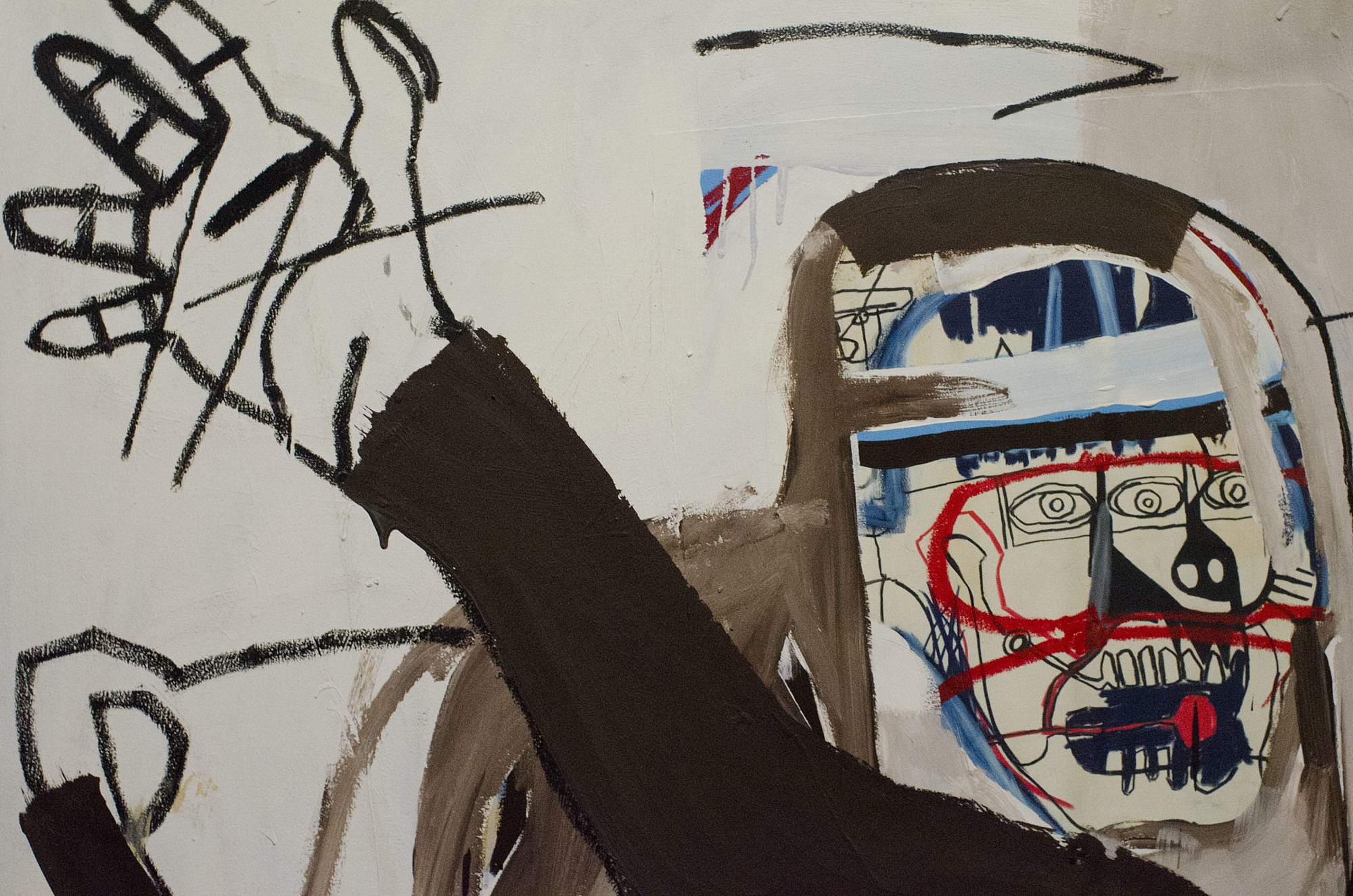
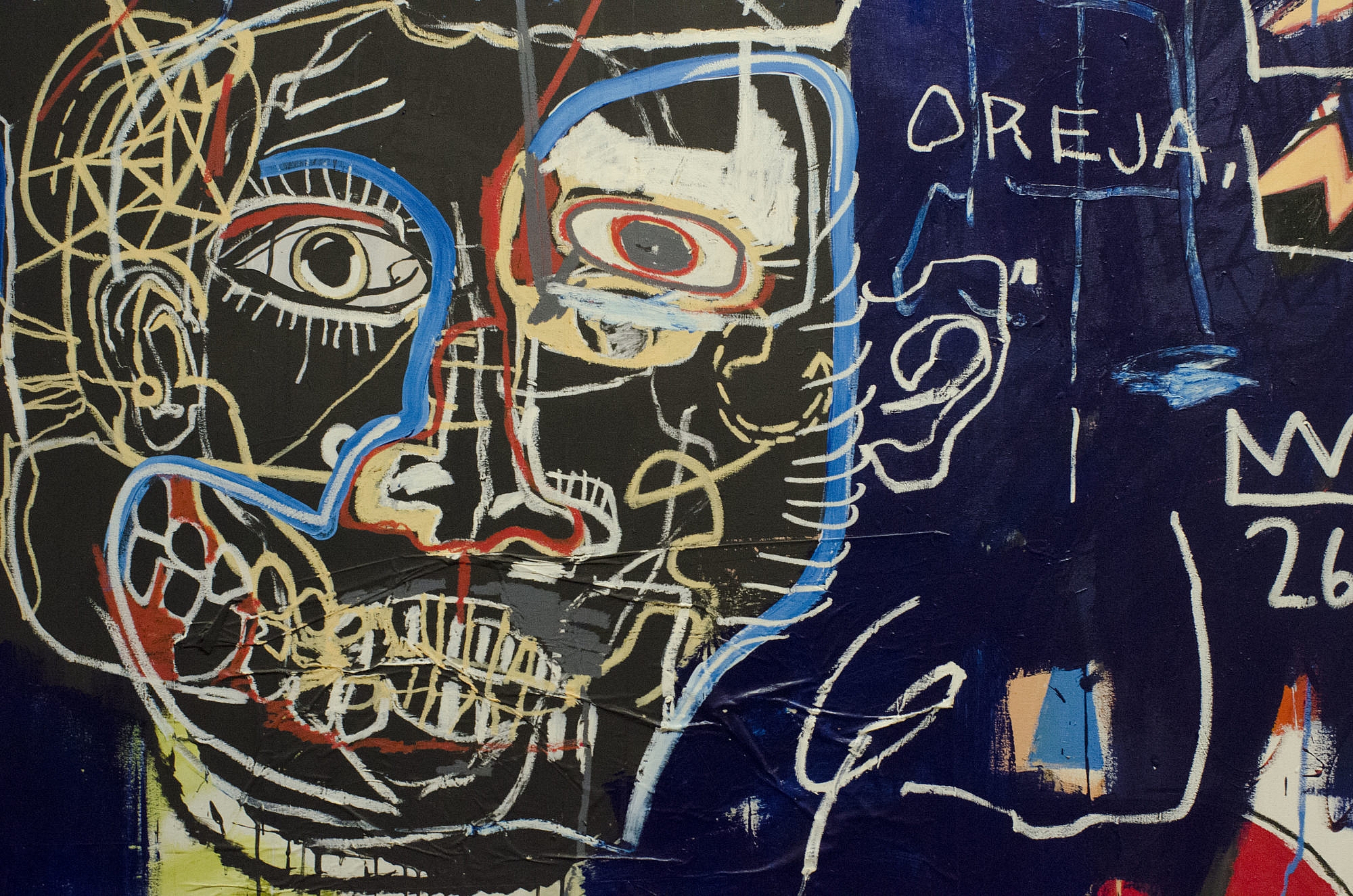
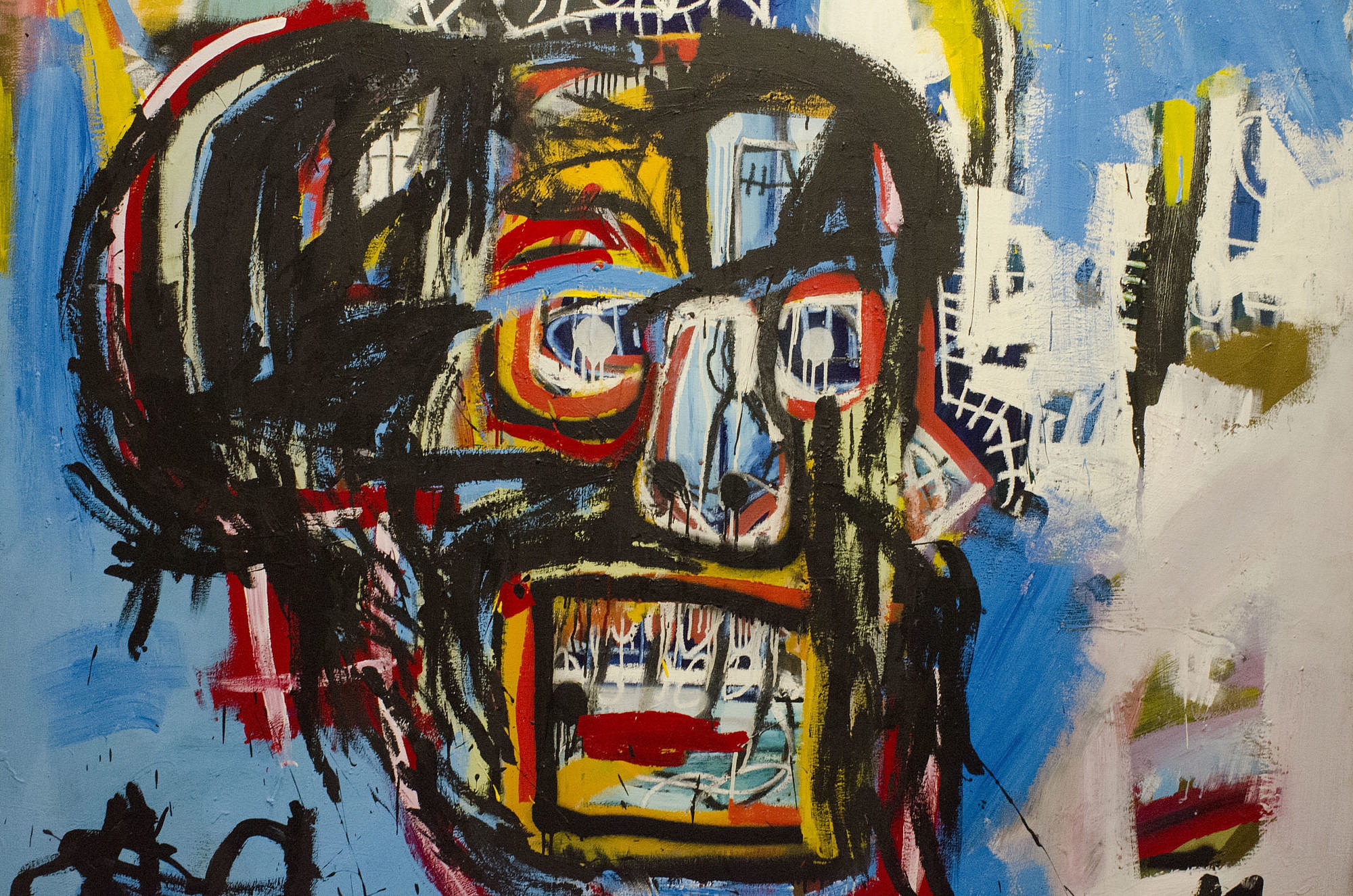
“Made” arrived on the eve of Japan hosting the 2020 Olympics. This homogenous country has a striking history of nationalistic tendencies, and it has long grappled with race, and xenophobia. When the Japanese noodle company Nissin, a sponsor of professional tennis player Naomi Osaka, was running an animated commercial, they portrayed Osaka as having white skin. Even though her mother is Japanese, and her father is Haitian, Osaka’s skin is undoubtedly black. Just last month, on the same day that Osaka won the Pan Pacific Open, there was a live televised sketch featuring the Japanese female comedy duo “A Masso.” Joking about Osaka they said that she was “sunburned.” Her skin “needed some bleach.” There’s nothing wrong with offensive jokes if they’re more funny than offensive, but this was along the entrenched lines of other racist jokes that are common here. They aren’t funny. In Japan, the use of blackface is still an arguable practice. Last year, on a live sketch comedy show, Masatoshi Hamada, one half of the comedy duo “Downtown,” donned black face and a Detroit Lions jacket to impersonate Eddie Murphy from the movie Beverly Hills Cop.
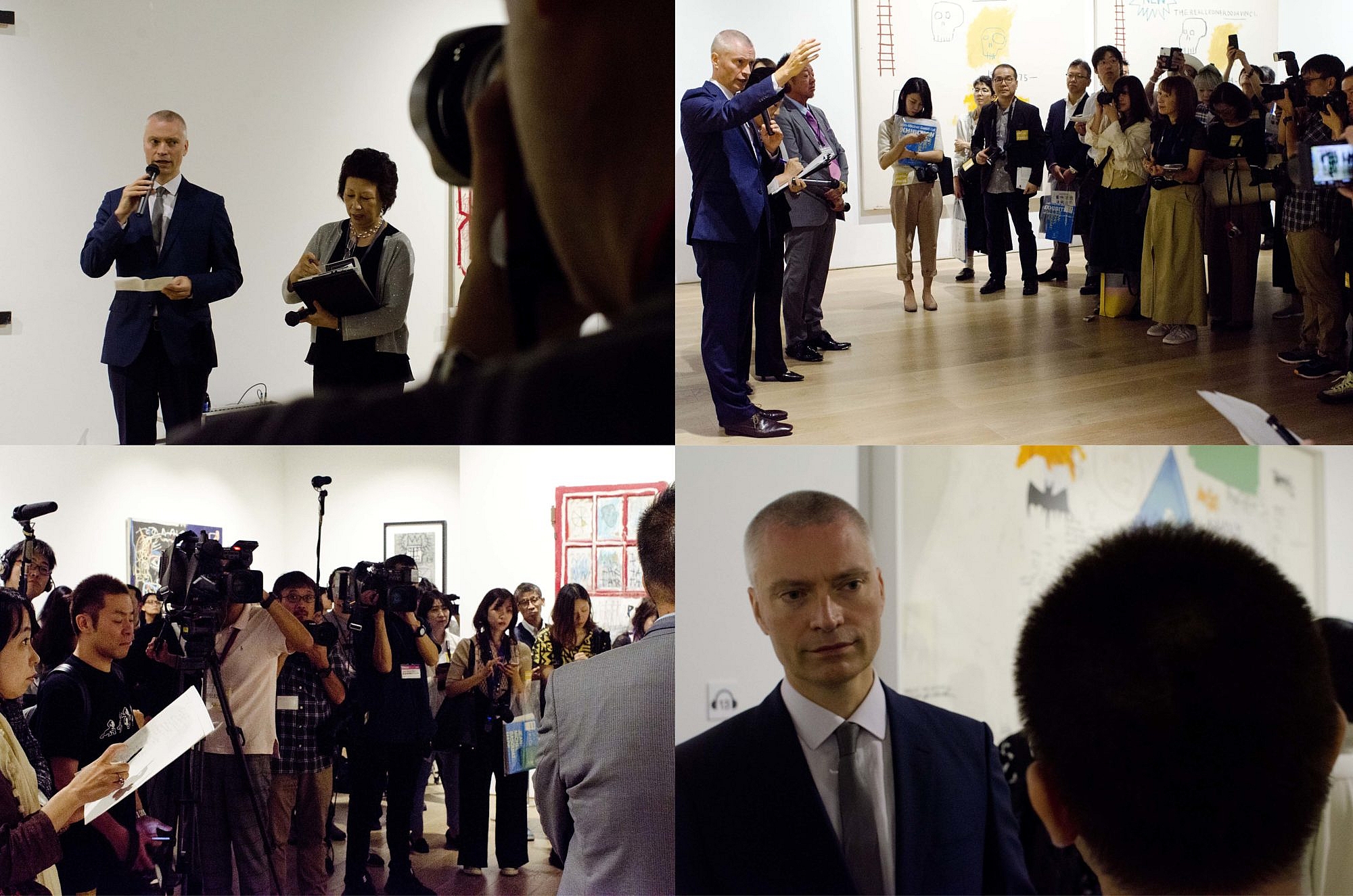
During “Made’s” press viewing, in the gallery’s core, near a dead black head, the Japanese press formed a half-circle. Armed with cameras, they shot Buchhart, a white man with high cheekbones, and bright blue eyes. He was holding a microphone, talking about Japan’s influence on Basquiat, attempting to link the country to the artist. And the connection is there. Basquiat visited the island nation several times in the 80’s. Japan was one of the first places outside of the US that took notice of the emerging artist. Untitled (1982) was bought by Japanese billionaire Yusaku Maezawa. Aside from that, Basquiat exhibited and painted here. Of the 130 pieces in the show, a small portion of them were either painted during his visits to Japan or inspired by it. In various works he depicted Japanese writing, origami, karate, and Japanese pagodas.
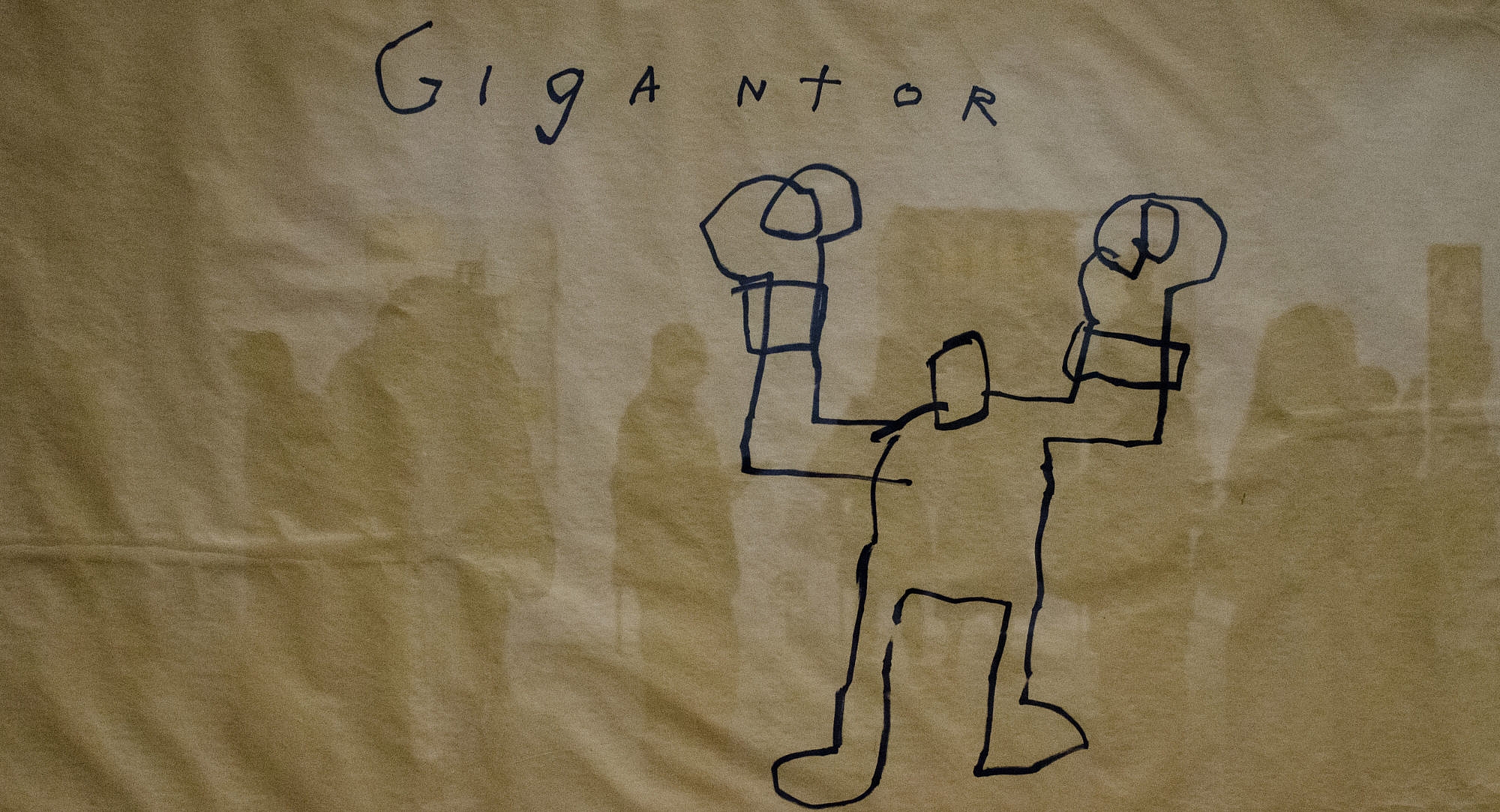
On brown paper, Untitled (1981) is a mechanical-like figure pointing his boxing gloves to the sky. “Gigantor” is scrawled above like a banner. The image refers to Tetsujin 28, a 1956 manga later adapted for television and broadcast in America. The triumphant figure’s pose is similar to Basquiat’s paintings of black champion boxers like Jack Johnson and Muhammad Ali. Their victories, like Japan’s Post-World War II economy, embody great possibility and perseverance. Untitled (Boxer) (1982), a painting not included in “Made,” is an ode to Ali who epitomized black power. His refusal to fight in the Vietnam War was in protest against the US war crimes committed against African nations, Vietnam, and Japan. “Gigantor” was an extension of that stance. Other works in the show like “Made In Japan I-II”(1982), “Onion Gum” (1983), “Napoleon” (1982), and “Plastic Sex” (1984), are proof of Basquiat’s process. He painted and drew whatever was around him. His abstractions are the sum of assembled fragments that speak without being suffocated under the weight of definite meaning.
Basquiat’s reflection of Japan is obvious in a painting like Oxygen/Carbon (1984), a montage of mankind’s greatest inventions that are meant to solve all of the problems that they create like the internet disconnecting people. Amid a broken veil of black, a car and a motocycle zoom. Rockets blast off. To the lower left there’s a diagram of an atomic bomb. Above it, red lines and black clouds blast out of “Kaboom.” From the top of the tallest building, a brown grimacing head looks at it. The scene conjures America’s atomic bombing of Nagasaki and Hiroshima, killing well over 200,000 people, most of them civilians. The U.S., knowing that the war was over, used Japan’s refusal to admit defeat as a means of testing a bomb that had a significant fraction of the sun’s power. It was no different than American slave owners experimenting with innovative torture techniques, designed to control the human mind. I think there’s no doubt that Basquiat saw the parallels. In the upper right hand corner, a Japanese tower rises. “Big Pagoda” is written underneath, tagged with a “™” trademark sign that symbolizes colonization. When I asked Buchhart about this, he disagreed at first, saying that Basquiat was a young New York artist trying to brand himself. Later, Buchhart admitted that Basquiat was using the trademark as an indication of slavery and techno-colonisation. When I tried linking the atomic bomb to Nagasaki and Hiroshima, he widened his blue eyes and assured me that “all of Basquiat’s work is about the black man.” Buchhart’s essay in the show’s catalogue, however, quotes Martin Luther King, “Injustice anywhere is a threat to justice everywhere.”
Throughout Buchhart’s presentation he talked about Basquiat’s painting techniques, his relationship to Japan, and his language of pictograms. Buchhart liked to point out that Basquiat adopted the yen sign into his “canon of iconography.” At the price of selling the show, Buchhart dislodged black expression from its people and history. He didn’t talk about Basquiat’s political act of painting black people or the discrimination that he faced when white people referred to his art as “primitive.” Instead, Buchhart promoted the importance of Japan’s cultural contribution to Basquiat’s art as opposed to the other way around. Japanese, much like white people, love black expression, yet to make money off of those who have it, predominant cultural boundaries must not be challenged but catered to. I was supposed to write this review for another magazine, but to use press photos of Basquiat’s art, I would’ve needed to submit my review to The New York Foundation for their approval since they owned the copyright to his images. Seeking approval wasn’t an option: NYF had already reprimanded the magazine for writing about the retrospective in regards to Basquiat’s personal life. The magazine was forced to take down the write-up from their website and let NYF rewrite it, thereby whitewashing any evidence of his background. When I asked Buchhart why he didn’t talk about the racial implications behind Basquait’s art? He said, “I had to bring the message that this exhibition was about Basquiat’s interests in Japan. There simply wasn’t enough time.”
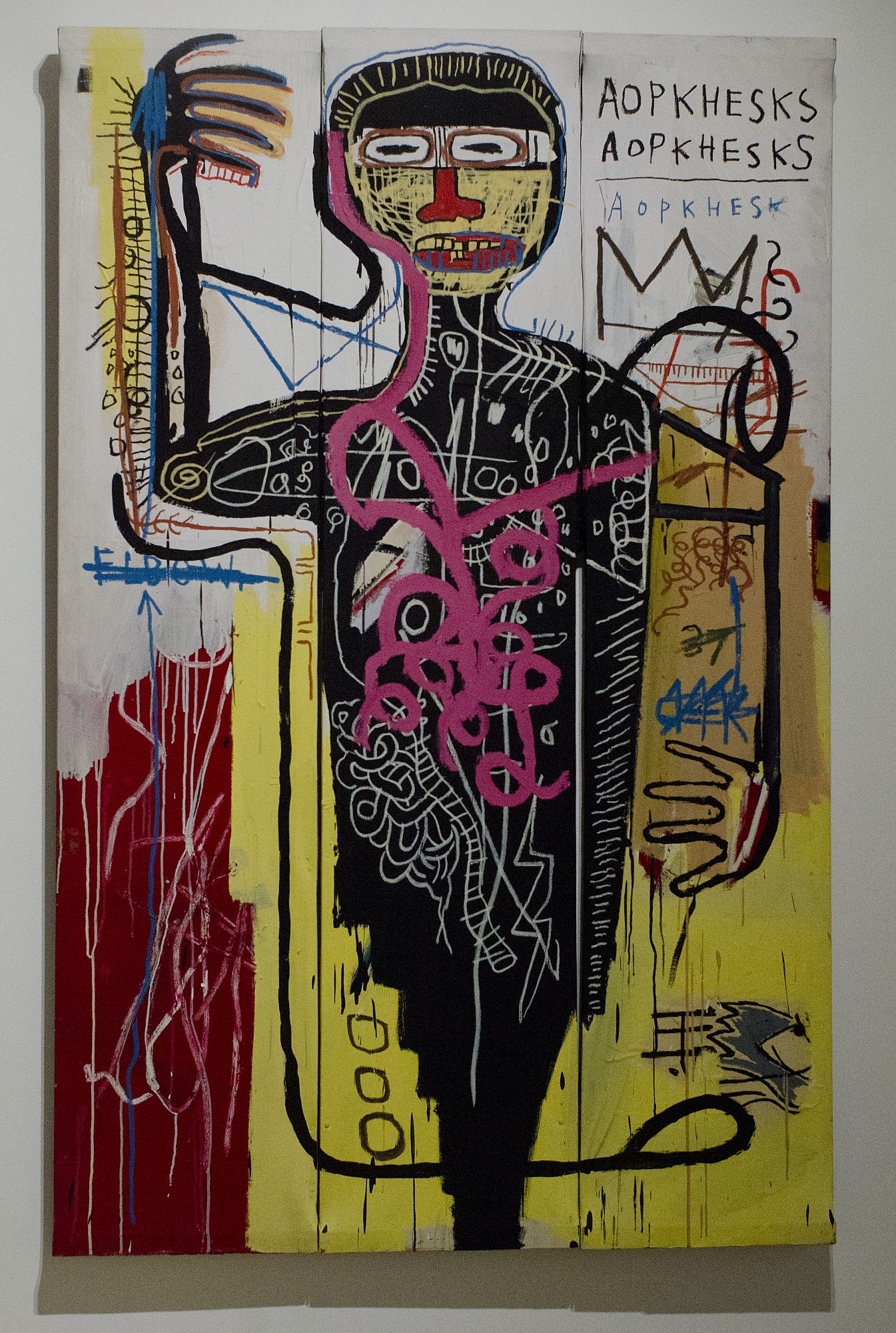
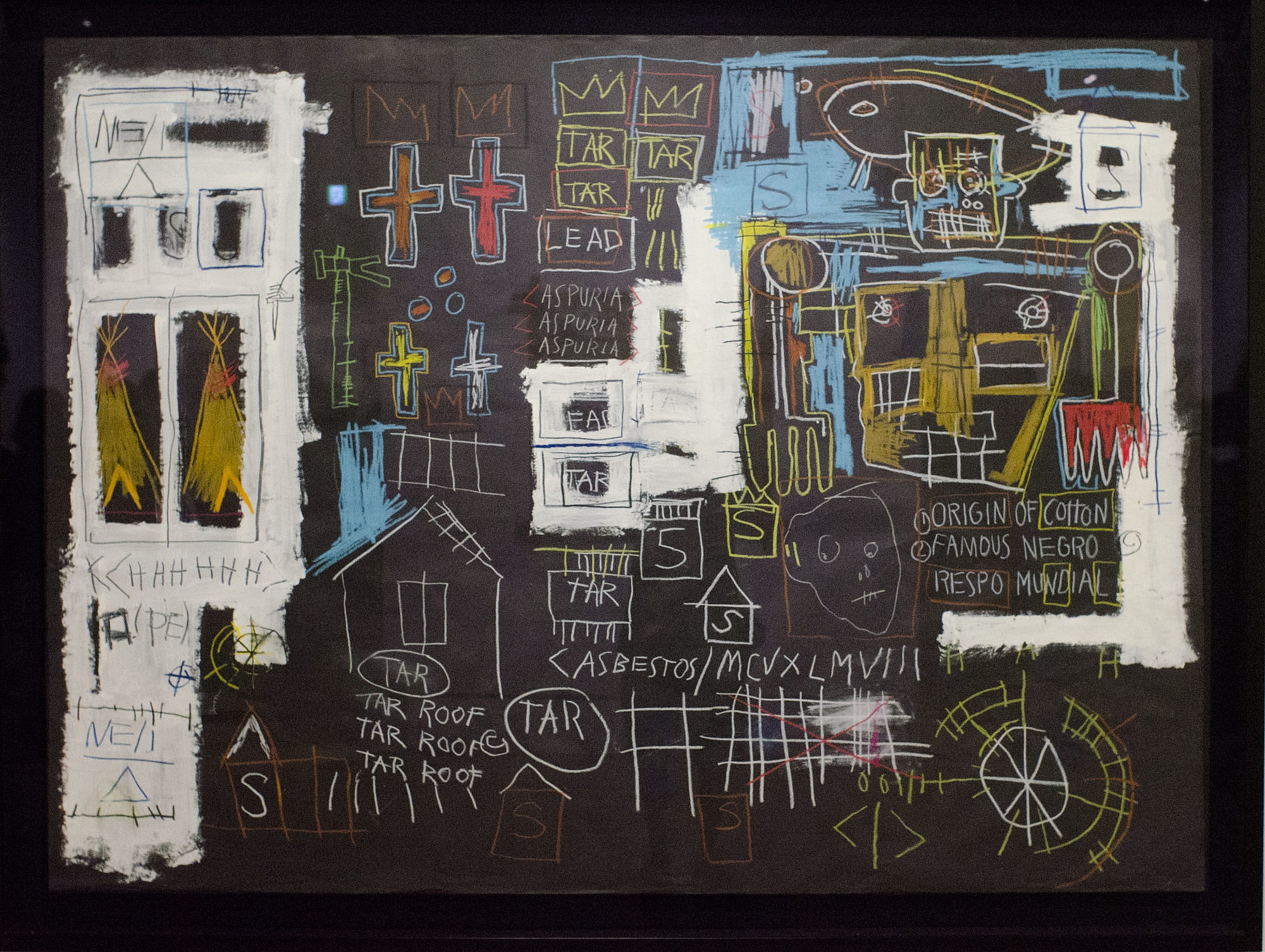
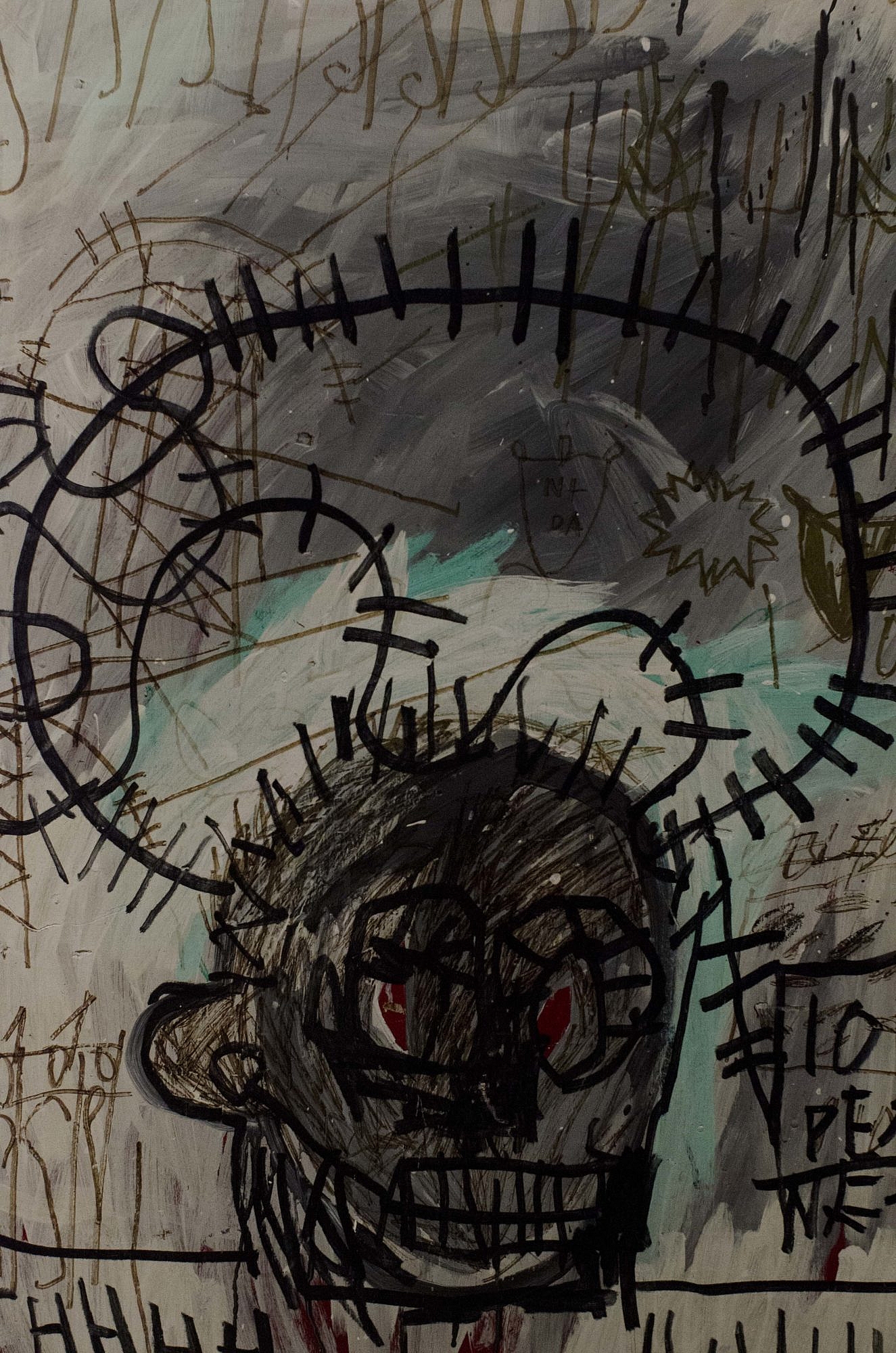
Rarely does one see a Basquiat painting in a museum. Proof of his impact is like Gnarls Barkley’s “Smiley Faces” video. Basquiat was indeed at the beginning of hip-hop. Him and Andy Warhol were friends, and like Barkley, Basquiat’s art lives through the pulse of those that peer into it. Multi-colored beams bare their electric life on canvas. The paintings are like a performance of grace that twitches when passing through the circular prisms of watchful eyes. Disassociated words and poems are in cahoots to overthrow rulers of language, prison guards who control the renaming of things, of abstractions that still morph into uncomfortable conclusions. Dada. Every brush stroke is untethered. Convulsing figures are riddled, terrified, and livid. Some are the anatomy of human heads as if dissected, burrowed into. Their acrylic and oil stick lines— broken, zigzagged, bent, and straight— are bones, limbs of lightning made flesh. Their brown skin is translucent. They are defined black, not as they would define themselves, but as directed; to be seen, but still invisible to those that look up at night and see nothing. Basquiat was “a phenomenon beyond phenomenon” whose myth preceded him. Most of his work is privately owned. After his death at 27 from a drug overdose in 1988, a number of his paintings were offered to museums, but were rejected. They too thought that he was a “fad.” Rich private collectors snatched them up like exotic pets that get trotted out as proof of its owner’s wealth. At the show’s press viewing, Basquiat’s paintings were like a series of captured animals. They were mummified, made docile, and defanged of any provocations that exposed Japan’s exploitation of black art. Just like America, Japan wants black culture, but not the actual people that produce it. Going home on the subway, I sat across from ads for “Made In Japan.” The sign featured the hundred million dollar black skull. They plastered the whole train car. I stared at them and listened to Armand Hammer on my headphones say, “All that he seen burnt a hole in his brain/Only came back to tell’em ‘bout them fuckin’ flames…”




